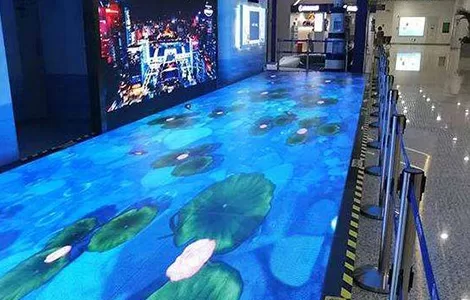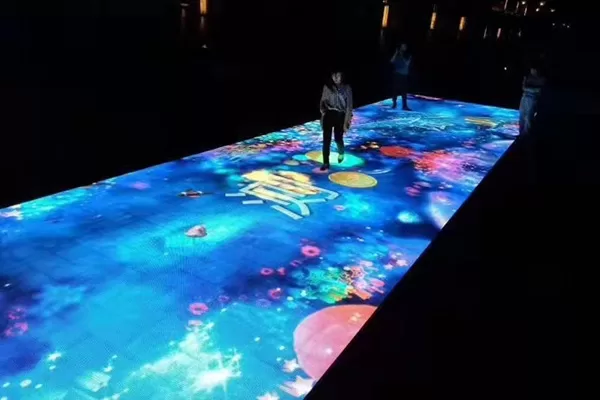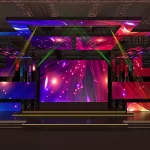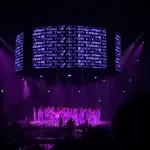In today’s experience-driven world, physical spaces must deliver more than static visuals. Brands, retailers, and venues are looking for digital tools that attract attention, hold it meaningfully, and drive user action. Interactive floor tile LED displays emerge as a game-changing solution—bridging visual impact with real-time interaction.
These systems are not just decorative. They serve as active engagement points that guide foot traffic, boost dwell time, and create immersive brand journeys. From shopping malls to museums, the demand for interactive floor LED technology is booming.
🎯 1. Attraction: Capturing Attention with Motion and Light
Modern consumers are overloaded with visual stimuli. Static signage often fades into the background. However, interactive LED floor tiles use motion triggers, light, and touch response to stand out instantly.
When a visitor steps onto the display, dynamic content activates—whether it’s swirling colors, rippling animations, or gamified effects. This surprise effect stops people in their tracks. Passersby become participants.
Moreover, when placed at entrances or corridors, these displays generate curiosity and invite exploration. They function like digital ‘welcome mats’ that convert ordinary flooring into high-impact storytelling tools.
👣 2. Engagement: Turning Foot Traffic into Experiences
Once users step onto the LED floor, they become part of the content. Each footstep triggers a visual or audio response. This real-time interaction keeps them engaged longer than traditional screens.
Retailers use interactive floor tile LED displays to showcase product information as users walk. Museums integrate them with exhibit data. Event organizers use them for games, live scoring, or directional guidance.
With multi-touch and pressure-sensing capabilities, floors can support collaborative play, branded quizzes, and immersive demos. These interactions extend dwell time—making the user more likely to connect with the brand.
🛍️ 3. Conversion: Guiding Users Toward the Next Step
Attraction and interaction mean little without conversion. Fortunately, interactive floors can be programmed to deliver call-to-actions. For example:
Step on a logo to receive a discount.
Follow a glowing path to the trial zone.
Complete a floor puzzle to unlock a QR code.
These cues subtly guide the user journey—driving movement toward conversion points like checkout counters or product displays. Integrated with sensors and AI, the system can adapt content based on traffic flow or time of day.
Furthermore, the floors can collect interaction data—revealing which zones get the most traffic, where users pause, or which visuals trigger action. This insight supports layout optimization and campaign tuning.
🏢 4. Application Scenarios Across Industries
The flexibility of interactive floor tile LED displays makes them suitable for various industries:
Retail Stores
Product discovery through gamification
Navigational paths that highlight promotions
Loyalty triggers based on floor engagement
Museums and Cultural Spaces
Immersive storytelling via foot-activated visuals
Interactive maps and educational trails
Inclusion of AR features for deeper learning
Trade Shows and Exhibitions
Live voting zones
Multi-user demos
Real-time engagement metrics
Hospitality and Entertainment
Lobby installations that double as brand showcases
Dance floors with reactive graphics
LED walkways for red carpet events
Smart Cities and Public Spaces
Directional guides for crowd control
Interactive installations that promote local culture
Data-driven footfall monitoring for city planning
⚙ 5. Technical Backbone: What Powers the Experience
These LED floors are built with high-durability materials. Surface modules are made of tempered glass or resin with anti-slip coating. Underneath lies a grid of pressure sensors, LED modules, and controllers.
Each tile acts as a node in a network—sending touch data to a central processor that renders visuals in milliseconds. Custom content management systems (CMS) allow for real-time updates, scheduled programming, and sensor calibration.
Advanced models even support:
Waterproofing and heat resistance for outdoor use
Multi-touch mapping for groups
AI-based analytics for engagement optimization
Moreover, integration with mobile devices, AR, or social media walls enhances cross-platform engagement.
💡 6. Designing for Results: Best Practices
To maximize impact, brands should follow these principles:
1. Place Strategically
Install at entrances, chokepoints, or central squares to guarantee exposure.
2. Keep Content Short and Reactive
Simple effects like “waves”, “footprints”, or “light trails” delight users quickly.
3. Use It as a Funnel
Design floor paths that walk users toward your point of conversion.
4. Align with Campaigns
Sync floor visuals with seasonal offers or product launches for coherence.
5. Analyze and Adapt
Monitor usage data to iterate layouts and content. What works in Q1 may not work in Q3.
📊 7. ROI: From Traffic to Transactions
Unlike passive signage, interactive LED floors generate measurable outcomes. By increasing footfall, doubling dwell time, and offering real-time conversion triggers, they outperform traditional media in retail and events.
Retailers report a 20–35% uplift in on-site engagement where floors are installed. Event booths using reactive floors see longer visit times and higher lead conversion. Most importantly, the novelty factor fosters social sharing—expanding brand reach without extra spend.
🧩 Conclusion: Building Unified Experience Spaces
In the experience economy, engagement isn’t optional—it’s essential. Interactive floor tile LED displays allow physical spaces to become immersive, data-driven, and conversion-optimized.
They blend architecture with storytelling. They turn passive traffic into active discovery. Most importantly, they unite attraction, interaction, and conversion in one dynamic surface.
As D-King continues to lead in display innovation, these systems offer retailers, institutions, and cities the tools to future-proof their environments.
Let your floor do more than support—it can inspire, inform, and sell.





